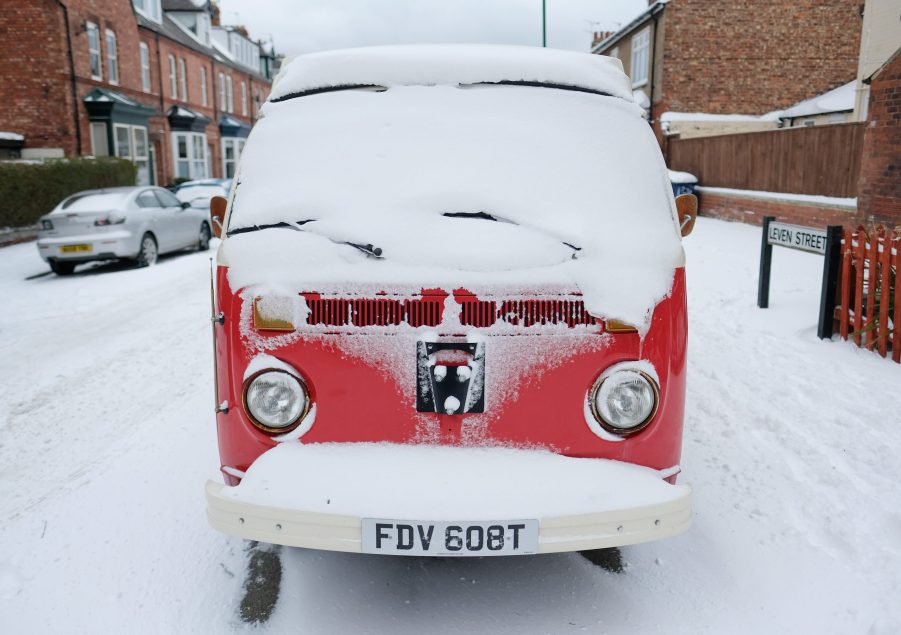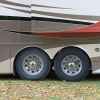
Tips to Prevent Your RV From Being Damaged While in Storage This Winter
Winter is a cruel mistress for anything on wheels, RVs especially. The cold weather sends motorhomes into a proverbial state of shock. And if you don’t prepare, your RV will emerge from winter storage in need of repair. So before you tuck your motorhome away this winter, here’s how to properly store it.

Drain every last drop of water from the RV’s pipe system
Most motorhomes come with freshwater, greywater, and blackwater tanks. The freshwater is for drinking, the blackwater is for doing your business, and greywater is for everything in between. But these systems are, obviously, filled with water. And with below-freezing temperatures approaching, any water in the system will turn to ice.
This causes a few devastating issues. If water freezes and expands, it can crack rubber hoses and burst metal pipes. Those are often expensive to replace and may require the whole system to be fixed. But just opening the drains isn’t enough to get all the water out.
A tip shared by Lincolnshire Live is to open the RV drain, let the water flow, then go for a short drive. Sway the motorhome left and right a few times, just to shake any excess water out of the system.
Don’t leave the battery in the motorhome

If you were to drive your motorhome once a week for at least 20 minutes, just to keep the battery charged, then maybe this wouldn’t be a huge issue. However, since RVs tend to stay parked in the winter, taking the battery out is a good idea. Cold weather drains batteries, so storing them somewhere warm (i.e. in your house) will make sure they work when you take the RV back out in the spring.
But the RV’s battery isn’t the only battery you should remove. Any battery left unattended in the cold will leak battery acid. So just take those AA and AAA batteries out of the clocks, appliances, and so forth scattered around the inside of your RV. After all, you don’t want nasty battery stains ruining the interior. And speaking of the interior, you’d better protect it too.
Cover any cracks, holes, and entryways of the RV’s interior

One of the most common problems with RVs is roof leaks. Purchasing a large RV cover can help prevent them, but it might not be enough. Using weatherproof tape, go around the edges of your RV to ensure no water can drip inside.
On top of that, you’ll want to block any entry points for insects and critters. These include the RV’s fridge and boiler vents. Your RV will be a cozy, lucrative spot for pests in the cold winter months, especially if it’s covered by a tarp. So don’t let any unwanted guests live in your RV when you’re not using it.
These simple tips can help prevent your RV from being damaged while in storage for the winter. And once spring emerges, your motorhome will be in just as good of shape as when you left it.


